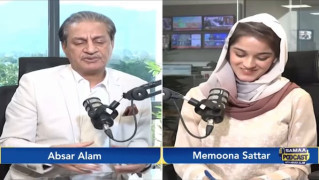RajaRawal111
Prime Minister (20k+ posts)

State Bank of Pakistan (SBP) is optimistic that the government will achieve a GDP growth rate ranging from 5 percent to 6 percent during the financial year of 2016-17.
Anything above 5% will mean that GDP growth rate will be highest in 9 years. Not to mention, Pakistan witnessed 4.7 percent GDP growth rate just an year ago.The central bank in its annual report last year had predicted that GDP growth rate will settle at more than 5 percent. A similar conclusion is being drawn after nine months of the ongoing fiscal year as SBP reported that national economy is sustainable in the country and that it is likely to meet the target of 5.7 percent GDP growth rate, as set by the government for the year 2016-17.
However, Moody and World Bank are not on the same page as they predicted that GDP will grow by 4.9 percent or 5 percent at the most.In any case, the GDP growth rate will be highest in eight years.According to SBPs quarterly report The State of Pakistans Economy, the GDP growth will be contributed by rebound activities of agriculture sector and increased pace of work on infrastructure and energy projects.
The commencement of operations of new power plants and the sustained increase in LNG imports are expected to help electricity generation and gas distribution to maintain last years momentum.Similarly, as indicated by strong trends in cement and steel production, the growth in construction sector is likely to remain robust in FY17 as well.The current trends in trade, especially imports; higher production and sale of commercial vehicles; substantial increase in bank credit; flourishing housing schemes; and rising internet subscription, all suggest a vibrant services sector.
The increase in agriculture production and sufficient food supplies, stable exchange rate, and a limited pass-through of rising international commodity prices to domestic prices are expected to keep inflation low and stable. Importantly, in case of oil prices, less-than-warranted increase in domestic motor fuel prices would limit its direct and second round impact on CPI inflation.
Moreover, the recent increase in investment demand as reflected by the widening of twin deficits may not have an adverse impact on inflation in the remaining months of FY17. Therefore, full year average CPI inflation is expected to remain in 4 to 5 percent range.
In view of strong growth in imports and taking stock of developments in international commodity prices and global economic trends, the current account deficit is likely to increase; however, the countrys foreign exchange reserves will remain at comfortable level.Some gains in exports due to the recently announced export package are expected to be offset by muted remittance growth. Declining number of migrant workers going to the GCC (reflecting stressed fiscal conditions in these countries due to low oil prices); the pound sterlings depreciation against the US dollar, and stricter regulatory controls in US, are the main factors that will keep remittance inflows close to last years level.
Given the actual fiscal deficit of 2.4 percent of GDP in the first half, and keeping in view that the deficit is usually higher in the second half, the full-year fiscal gap will be higher than the target of 3.8 percent.This projection incorporates the impact of the recently announced export package, and assumes no significant change in the current pace of revenue collection in the absence of additional revenue generating measures.On the other hand, expenditures are likely to remain elevated due to the governments commitment to complete most of the power and infrastructure projects by close of FY18 and ongoing operations aimed to further improve the countrys security environment.
Source
Last edited by a moderator:
























